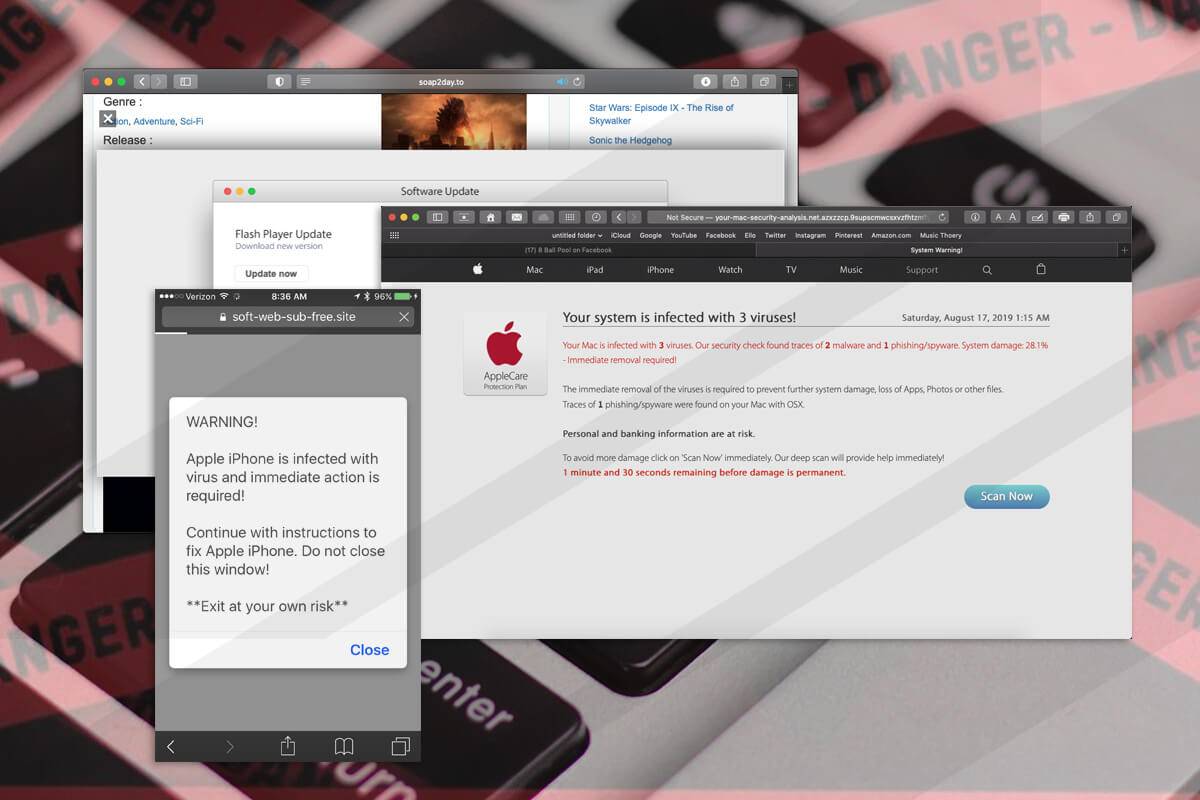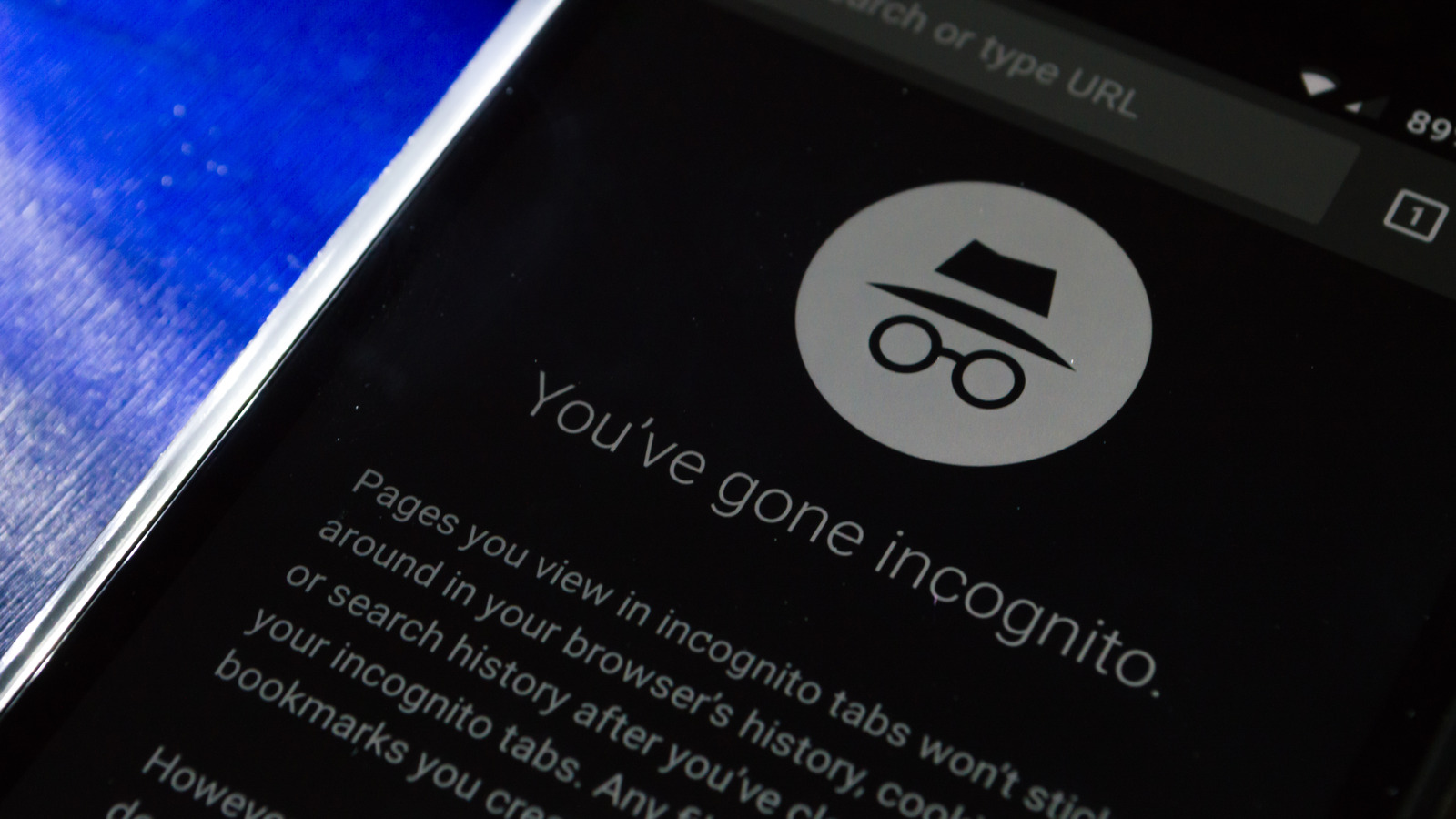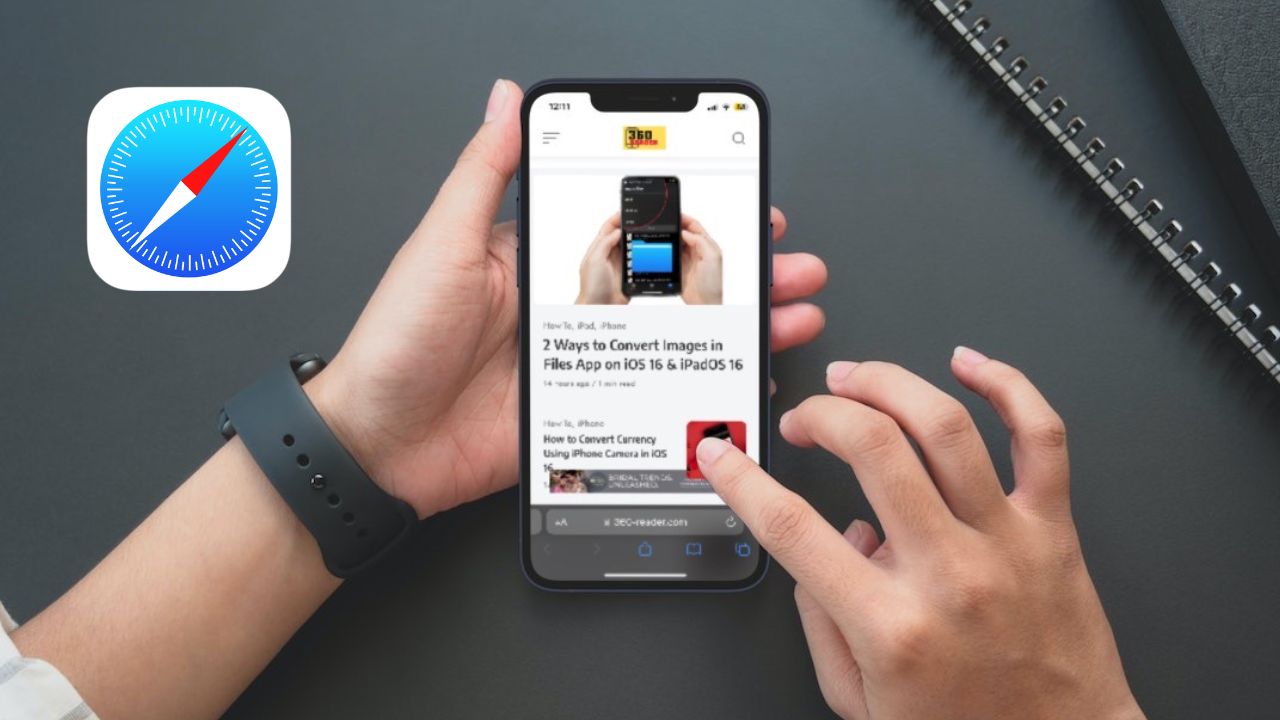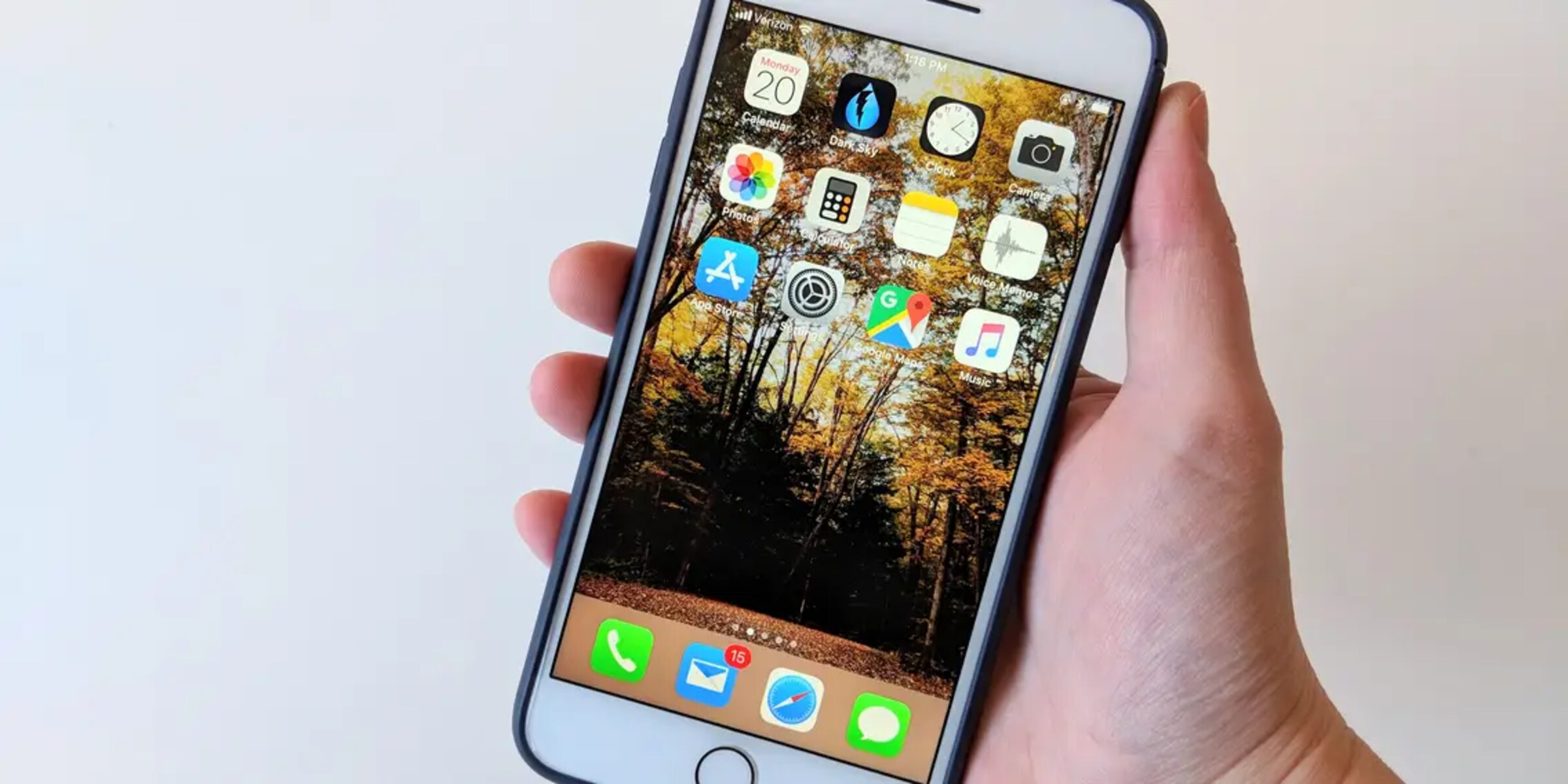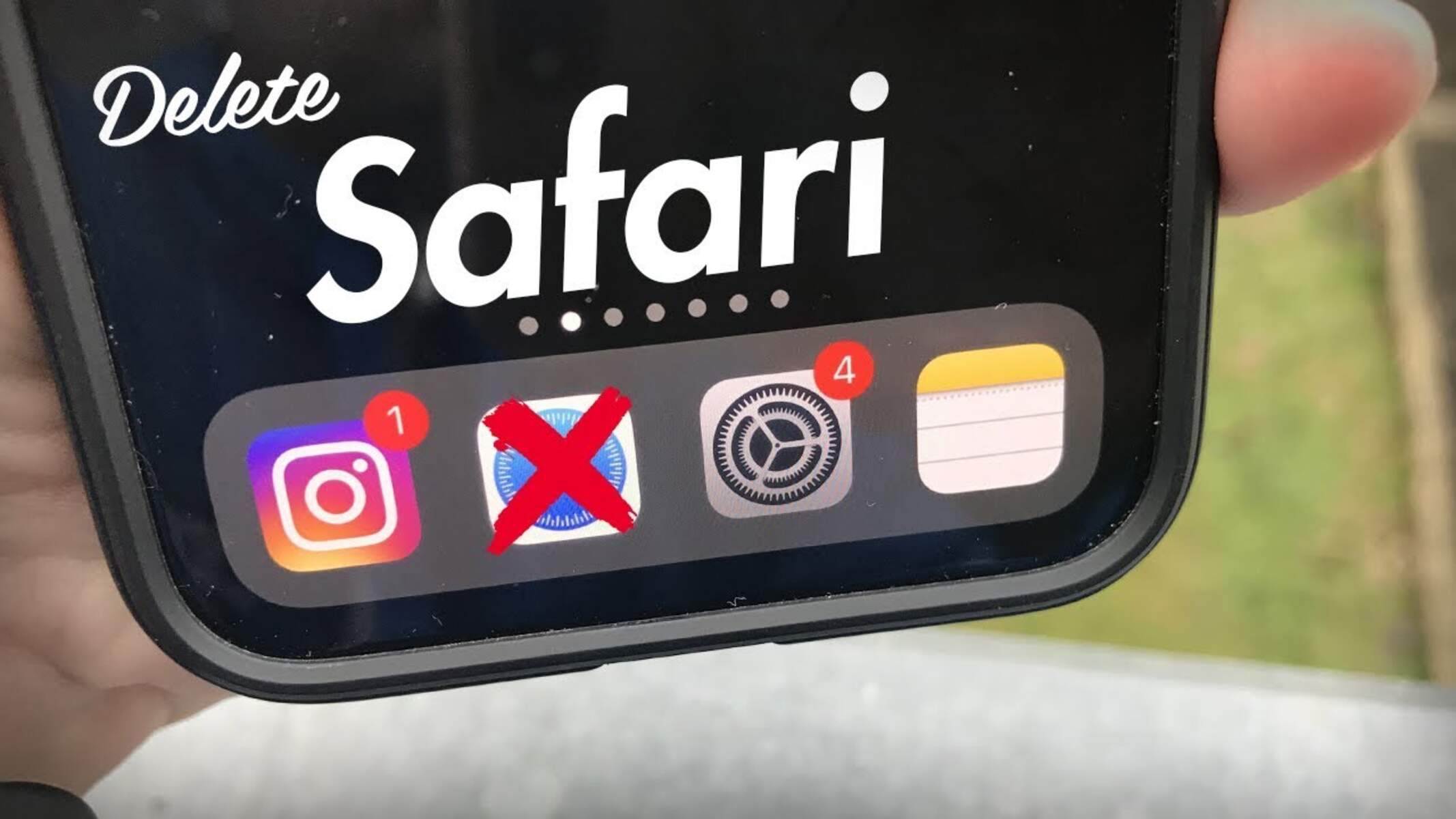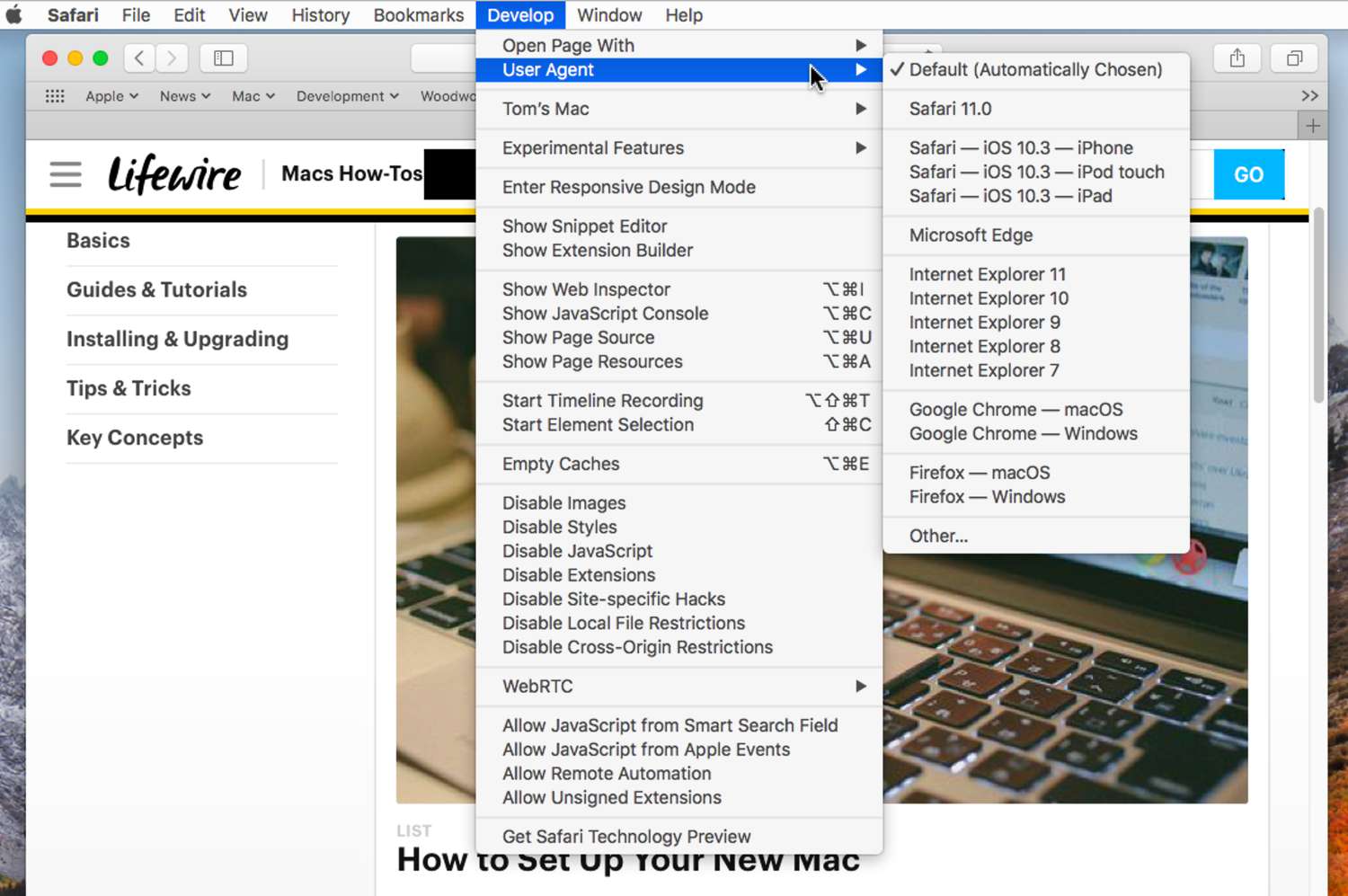Introduction
Safari, the default web browser for Apple devices, is known for its sleek interface and seamless user experience. However, like any other browser, it is not immune to the threat of viruses and malware. If you've noticed unusual pop-ups, redirects to suspicious websites, or a sudden slowdown in Safari's performance on your iPhone, it's possible that your device has been infected with a virus.
Dealing with a virus on your iPhone can be a frustrating experience, but the good news is that there are effective steps you can take to remove it and safeguard your device from future threats. In this guide, we'll walk you through the process of removing a virus from Safari on your iPhone, ensuring that you can browse the web safely and enjoy a smooth, uninterrupted user experience.
Whether you're a tech-savvy individual or someone who's new to handling iPhone security issues, this guide is designed to provide clear, actionable steps that anyone can follow. By the end of this tutorial, you'll have the knowledge and tools to rid your Safari browser of any unwanted viruses and protect your iPhone from potential security threats.
Now, let's dive into the step-by-step process of removing viruses from Safari on your iPhone, so you can regain control of your browsing experience and keep your device secure.
Step 1: Update Safari and iOS
Keeping your Safari browser and iOS up to date is crucial for maintaining the security and performance of your iPhone. Apple regularly releases updates that include security patches and bug fixes, which can help protect your device from viruses and other online threats. Here's how you can ensure that Safari and iOS are updated to the latest versions:
-
Update Safari:
- Open the App Store on your iPhone.
- Tap on your profile picture at the top right corner.
- Scroll down to find the "Safari" app in the list of available updates.
- If an update is available, tap the "Update" button next to Safari to install the latest version.
-
Update iOS:
- Go to the "Settings" app on your iPhone.
- Tap on "General" and then select "Software Update."
- If a new iOS version is available, tap "Download and Install" to update your device to the latest version.
By keeping Safari and iOS updated, you ensure that your browser and device are equipped with the latest security features and improvements. This reduces the risk of encountering viruses and malware while browsing the web, providing you with a safer and more secure online experience.
It's important to make a habit of regularly checking for updates for both Safari and iOS to stay protected against evolving security threats. Additionally, enabling automatic updates for apps and iOS can streamline the process, ensuring that your device is always equipped with the latest security enhancements without requiring manual intervention.
By following these simple steps to update Safari and iOS, you take a proactive approach to safeguarding your iPhone against potential security vulnerabilities, setting the stage for the subsequent measures to remove viruses from Safari and fortify your device's defenses.
Step 2: Clear Safari History and Website Data
Clearing Safari's history and website data is an essential step in removing viruses and improving the overall security of your browsing experience on iPhone. By doing so, you can eliminate potentially compromised data and reset Safari to a cleaner state, reducing the risk of encountering malicious scripts or unwanted redirects. Here's how you can clear Safari history and website data on your iPhone:
-
Open the "Settings" app on your iPhone and scroll down to find "Safari" in the list of installed apps.
-
Tap on "Safari" to access its settings and scroll down to locate the "Clear History and Website Data" option.
-
Tap on "Clear History and Website Data" and confirm your decision when prompted. This action will remove your browsing history, cookies, and other site data stored on your device.
By clearing your browsing history and website data, you effectively erase any traces of potentially harmful websites or scripts that may have contributed to the presence of viruses on your Safari browser. This step serves as a reset for Safari, allowing you to start with a clean slate and minimize the chances of encountering security threats during your browsing sessions.
It's important to note that clearing your browsing history and website data may log you out of websites and remove saved preferences, so be prepared to re-enter login credentials and customize settings as needed. However, the trade-off is a more secure and optimized browsing environment, free from the remnants of potentially compromised data.
In addition to clearing history and website data manually, you can also consider enabling the "Private Browsing" mode in Safari, which prevents the browser from storing your browsing history and website data. This can be particularly useful when you want to browse the web without leaving a trail of data on your device, enhancing your privacy and security.
By taking the proactive step of clearing Safari history and website data, you contribute to a safer and more secure browsing experience on your iPhone, setting the stage for further measures to remove viruses and fortify your device against potential security threats.
Step 3: Disable JavaScript and Pop-ups
Disabling JavaScript and pop-ups in Safari on your iPhone can significantly enhance your browsing security and protect your device from potential virus infections. JavaScript is a programming language commonly used to add interactive features to websites, but it can also be exploited by malicious actors to execute harmful scripts. Pop-ups, on the other hand, can be used to deceive users into clicking on fraudulent content or downloading malicious software. By taking the following steps to disable JavaScript and pop-ups, you can reduce the risk of encountering security threats while browsing the web on your iPhone.
Disabling JavaScript:
- Open the "Settings" app on your iPhone and scroll down to find "Safari" in the list of installed apps.
- Tap on "Safari" to access its settings and locate the "Advanced" section.
- In the "Advanced" settings, toggle off the "JavaScript" option to disable it.
By disabling JavaScript, you prevent potentially harmful scripts from running in Safari, reducing the likelihood of encountering malicious code that could compromise your device's security. While this may impact the functionality of certain websites that rely heavily on JavaScript, it provides a proactive layer of protection against malicious activities that exploit this programming language.
Disabling Pop-ups:
- In the "Safari" settings, ensure that the "Block Pop-ups" option is enabled. This setting prevents intrusive pop-up windows from appearing while you browse the web.
By blocking pop-ups, you shield yourself from deceptive or malicious content that may attempt to trick you into engaging with harmful websites or downloading suspicious files. This proactive measure enhances your browsing safety and reduces the risk of inadvertently exposing your device to security threats.
It's important to note that while disabling JavaScript and blocking pop-ups can bolster your browsing security, it may impact the functionality and user experience of certain websites. However, the trade-off is a more secure and controlled browsing environment, where the risk of encountering harmful content is significantly reduced.
By taking the proactive step of disabling JavaScript and pop-ups in Safari on your iPhone, you contribute to a safer and more secure browsing experience, minimizing the potential for virus infections and enhancing your device's overall security posture.
Step 4: Reset Safari Settings
Resetting Safari settings on your iPhone can serve as a powerful tool in combating viruses and restoring the browser to a clean, default state. This process effectively eliminates any customizations, preferences, and potentially compromised configurations that may have contributed to the presence of viruses or malware. By initiating a reset of Safari settings, you can create a fresh starting point for your browsing experience, free from the remnants of security threats and unwanted modifications.
Here's how you can reset Safari settings on your iPhone:
-
Open the "Settings" app on your iPhone and scroll down to find "Safari" in the list of installed apps.
-
Tap on "Safari" to access its settings and scroll down to locate the "Clear History and Website Data" option.
-
Below the "Clear History and Website Data" option, you'll find the "Advanced" section. Tap on it to access advanced Safari settings.
-
In the "Advanced" settings, you'll find the "Website Data" option. Tap on it to view the stored website data on your device.
-
Scroll to the bottom of the "Website Data" screen and tap on "Remove All Website Data." Confirm your decision when prompted.
By following these steps, you initiate a comprehensive reset of Safari settings, clearing all stored website data and returning the browser to its default state. This action effectively removes any potentially compromised data, cookies, and website preferences, providing you with a clean slate for your browsing activities.
It's important to note that resetting Safari settings may log you out of websites, remove saved preferences, and impact certain customizations you've made to the browser. However, the trade-off is a more secure and optimized browsing environment, free from the remnants of potentially compromised data and configurations.
In addition to resetting Safari settings, you can also consider clearing website data and cookies regularly to maintain a clean and secure browsing environment. By incorporating these proactive measures into your browsing habits, you contribute to a safer and more secure experience on Safari, reducing the risk of encountering viruses and malware while protecting your iPhone from potential security threats.
By taking the proactive step of resetting Safari settings on your iPhone, you create a foundation for a more secure and optimized browsing experience, minimizing the potential for virus infections and enhancing your device's overall security posture.
Step 5: Install a Reliable Antivirus App
In today's digital landscape, where cyber threats continue to evolve and proliferate, installing a reliable antivirus app on your iPhone is a crucial step in fortifying your device against viruses and malware. While iOS is designed with robust security features, including sandboxing and app isolation, the proactive deployment of an antivirus app can provide an additional layer of defense, offering real-time protection and threat detection capabilities.
When selecting an antivirus app for your iPhone, it's essential to choose a reputable and trusted solution from a recognized developer. Look for antivirus apps that offer comprehensive features such as on-demand and real-time scanning, malicious website blocking, and regular updates to combat emerging threats effectively.
Once you've identified a reliable antivirus app, follow these steps to install and configure it on your iPhone:
-
App Store Search: Open the App Store on your iPhone and use the search function to find the antivirus app of your choice. Ensure that you select an app with positive reviews and a proven track record in mobile security.
-
Download and Installation: Tap on the antivirus app's listing and initiate the download and installation process. Once the app is installed, launch it to begin the setup and configuration.
-
Configuration and Scanning: Follow the app's on-screen instructions to configure its settings, including enabling real-time protection and scheduling regular scans. Take advantage of any additional security features offered by the app to enhance your device's protection.
-
Update Definitions: Ensure that the antivirus app's threat definitions are up to date by allowing it to download the latest updates. Regular updates are essential for staying ahead of new and emerging threats in the ever-changing landscape of cybersecurity.
-
Real-Time Protection: Keep the real-time protection feature of the antivirus app enabled at all times to detect and block potential threats as you browse the web and use various apps on your iPhone.
By installing a reliable antivirus app on your iPhone, you empower your device with proactive defense mechanisms that can identify and neutralize potential security risks, including viruses, trojans, and other forms of malware. This proactive approach to mobile security complements the built-in safeguards of iOS, creating a robust defense strategy that prioritizes the safety and integrity of your browsing and app usage experiences.
Incorporating a reliable antivirus app into your iPhone's security framework not only helps in removing existing viruses from Safari but also serves as a proactive measure to prevent future infections, ensuring that your device remains resilient against evolving cyber threats.
Conclusion
In conclusion, safeguarding your iPhone from viruses and malware is essential for maintaining a secure and enjoyable browsing experience. By following the comprehensive steps outlined in this guide, you've taken proactive measures to remove viruses from Safari on your iPhone and fortify your device against potential security threats. From updating Safari and iOS to installing a reliable antivirus app, each step contributes to a layered defense strategy that prioritizes the safety and integrity of your browsing activities.
By keeping Safari and iOS updated, you ensure that your device is equipped with the latest security enhancements, reducing the risk of encountering viruses and malware while browsing the web. Clearing Safari history and website data serves as a reset, eliminating potentially compromised data and minimizing the chances of encountering security threats. Disabling JavaScript and pop-ups provides a proactive layer of protection, reducing the likelihood of encountering harmful scripts and deceptive content. Resetting Safari settings creates a clean slate for your browsing experience, free from the remnants of potentially compromised data and configurations. Finally, installing a reliable antivirus app empowers your device with real-time protection and threat detection capabilities, ensuring that your iPhone remains resilient against evolving cyber threats.
By incorporating these measures into your iPhone's security framework, you've not only addressed the immediate concern of virus removal from Safari but also established a proactive defense strategy to prevent future infections. This proactive approach to mobile security complements the built-in safeguards of iOS, creating a robust defense strategy that prioritizes the safety and integrity of your browsing and app usage experiences.
As you continue to explore the digital landscape and engage with online content, maintaining a proactive stance towards security and staying informed about emerging threats will be crucial. Regularly reviewing and updating your device's security settings, staying vigilant against suspicious activities, and being mindful of the websites and apps you interact with can further enhance your device's security posture.
By taking the initiative to remove viruses from Safari on your iPhone and fortify your device against potential security threats, you've demonstrated a commitment to safeguarding your digital experiences and ensuring a safer and more secure browsing environment for yourself and others. With these proactive measures in place, you can navigate the digital realm with confidence, knowing that your iPhone is equipped to handle the challenges of the ever-evolving cybersecurity landscape.







